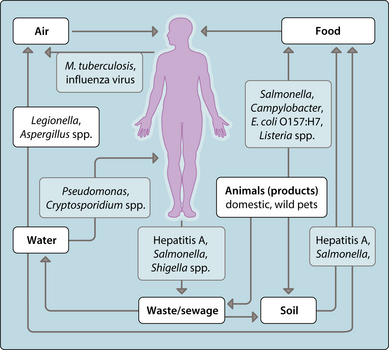39. Food, water and public health microbiology
Our food, water and air can harbour a number of potential pathogens that cause a range of infections including gastroenteritis, septicaemia and respiratory infections (Fig. 3.39.1). The advent of penicillin and other antibiotics, or even vaccination, have not been the main factors responsible for reducing the prevalence and incidence of such infections. It is mainly a consequence of the substantial improvement in environmental hygiene.
< div class='tao-gold-member'>
Only gold members can continue reading. Log In or Register to continue












